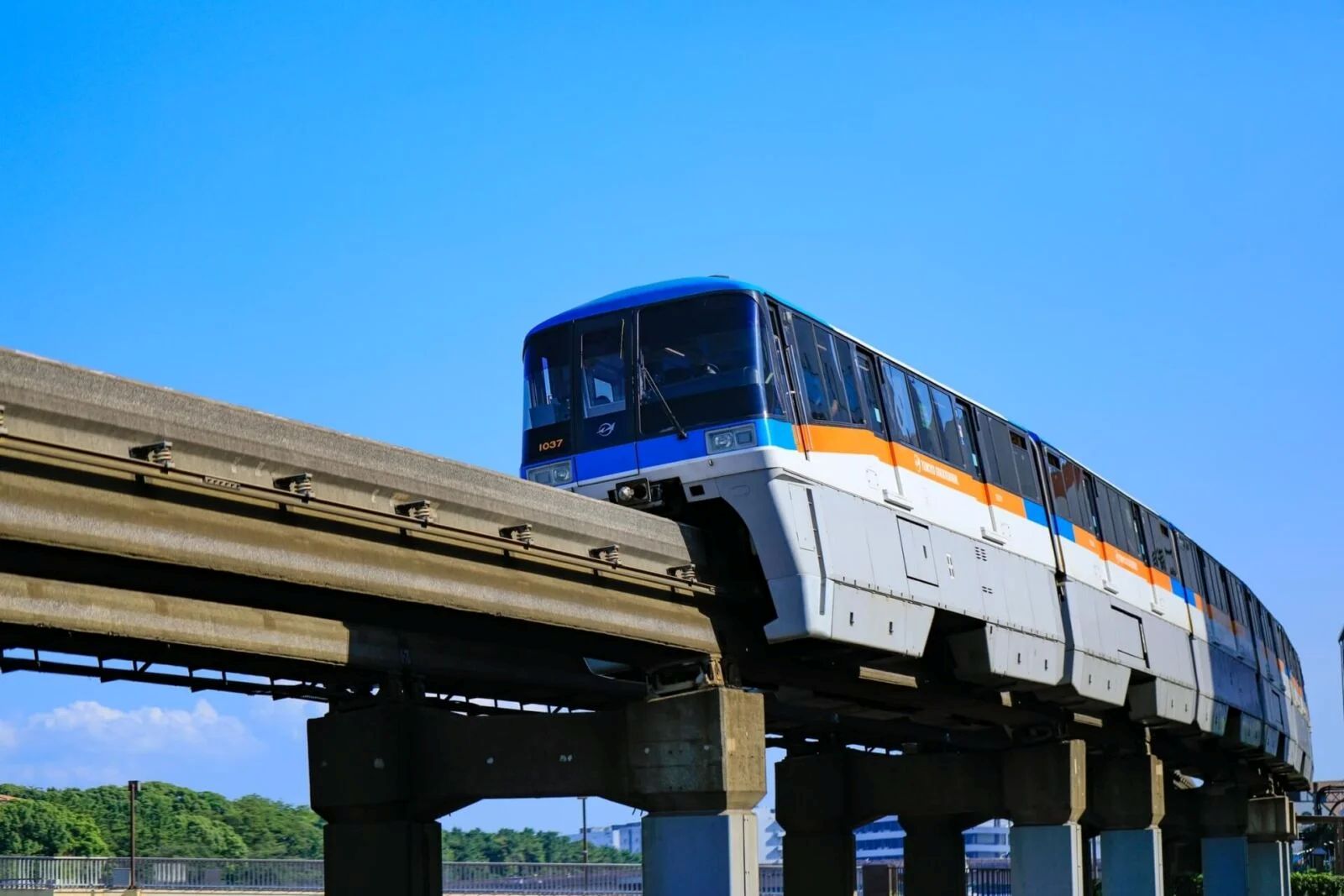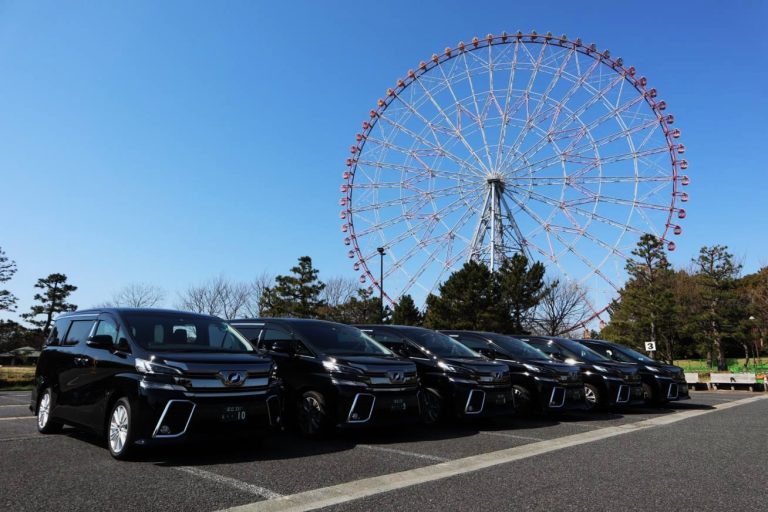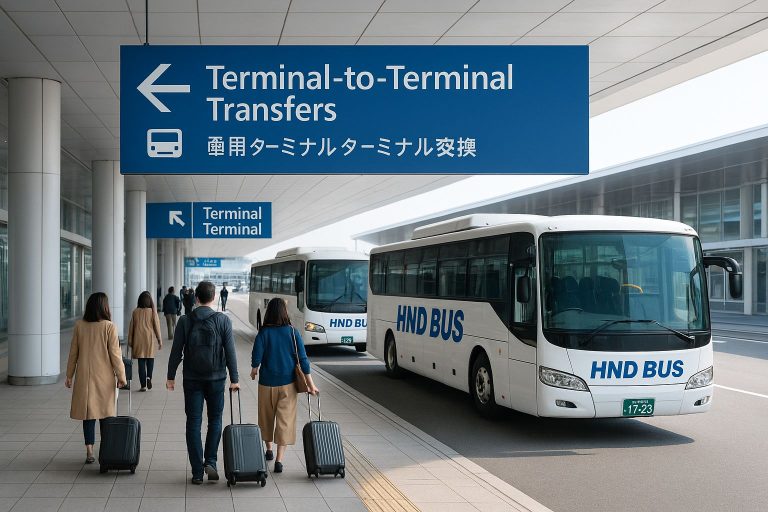Overview of the Haneda to Shinjuku Express
The Haneda to Shinjuku Express represents one of Tokyo’s most reliable airport transportation solutions, bridging the gap between Japan’s busiest domestic airport and the vibrant heart of the capital. This dedicated bus service has become increasingly popular among both international visitors and local travelers who value convenience and affordability over speed.
Operating as part of the comprehensive Airport Limousine Bus network, this express service connects two of Tokyo’s most significant transportation hubs. The route serves as a vital link for passengers traveling between Haneda Airport and Shinjuku, one of Tokyo’s major commercial and entertainment districts. The service extends beyond just Shinjuku, also providing connections to nearby areas like Ikebukuro, making it an versatile option for travelers heading to various parts of western Tokyo.
Introduction to the Service
The Airport Limousine Bus service connecting Haneda and Shinjuku began operations to address the growing demand for reliable late-night and early-morning transportation options. Unlike train services that cease operations during certain hours, this bus service maintains connectivity even during off-peak periods when other public transportation options become limited.
The service operates comfortable, modern buses equipped with ample luggage storage and passenger amenities. Each vehicle is designed specifically for airport transfers, featuring low-floor designs for easy boarding and spacious interiors that accommodate travelers with varying amounts of luggage.
Purpose and Benefits of the Express
This express service fills a crucial gap in Tokyo’s transportation network by providing 24-hour connectivity between Haneda Airport and central Tokyo locations. The primary benefit lies in its ability to serve passengers during hours when train services are suspended, typically between midnight and 5 AM.
Beyond timing convenience, the service offers direct routes without the need for transfers, making it particularly attractive for travelers carrying heavy luggage or those unfamiliar with Tokyo’s complex rail network. The buses follow dedicated routes that minimize travel time while ensuring passenger comfort throughout the journey.
Target Audience for the Service
The service primarily caters to air travelers arriving on late-night or departing on early-morning flights. International visitors often prefer this option due to its straightforward booking process and the elimination of complex train transfers that might be challenging with jet lag or language barriers.
Business travelers also frequently utilize this service, appreciating the reliable scheduling and comfortable seating that allows for rest during transit. Additionally, domestic travelers who prioritize cost-effectiveness over speed find this service appealing, especially when traveling with families or groups where individual train tickets would be more expensive.
Pricing and Ticketing Information
The Haneda to Shinjuku Express offers competitive pricing that makes it accessible to a wide range of travelers. Understanding the fare structure and available ticketing options helps passengers make informed decisions about their airport transportation needs.
Pricing for the service ranges from approximately $9.40 to $18.90 USD, depending on the specific destination within the Shinjuku area and the type of service selected. This pricing structure reflects the service’s positioning as a mid-range transportation option, more expensive than some train alternatives but significantly cheaper than taxi services for the same route.
The fare variation accounts for different stopping points along the route, with some destinations requiring longer travel times or serving areas with higher operational costs. Peak hour surcharges may apply during certain periods, though the service maintains relatively stable pricing throughout most operating hours.
Cost of the Journey
Standard fares for adults traveling from Haneda Airport to Shinjuku typically fall within the $9.40 to $18.90 range, with most passengers paying around $12 to $15 for common destinations. Children between ages 6 and 11 receive discounted fares, usually around 50% of the adult price, while infants under 6 travel free when not occupying a separate seat.
Group discounts may be available for parties of 10 or more passengers, though advance booking is typically required to secure these rates. The pricing includes one piece of standard luggage per passenger, with additional or oversized luggage potentially incurring extra fees.
Available Ticket Options
Passengers can choose from several ticket types to suit their travel needs. Single-journey tickets represent the most common option, providing one-way transportation between Haneda and designated Shinjuku area stops. Round-trip tickets offer slight savings for passengers planning return journeys within specified timeframes.
Advanced booking tickets often provide discounted rates compared to same-day purchases, encouraging passengers to plan ahead. Some ticket packages include additional services such as priority boarding or guaranteed seating, appealing to travelers who value extra convenience during their journey.
Online Booking vs. On-Site Purchase
Online booking platforms offer the convenience of advance purchase with guaranteed seating, particularly valuable during peak travel seasons or holidays. Digital tickets can be stored on smartphones, eliminating the need for physical ticket handling and reducing the risk of loss during travel.
On-site purchases at Haneda Airport provide flexibility for last-minute travelers, though seat availability cannot be guaranteed during busy periods. Airport ticket counters typically offer multilingual support, assisting international passengers with booking questions and providing route information in various languages.
Timetable and Frequency of Service
The Haneda to Shinjuku Express operates on carefully planned schedules designed to accommodate various flight arrival and departure times. Understanding the service frequency and timing helps passengers plan their journeys effectively and avoid unnecessary waiting periods.
Service frequency varies throughout the day, with higher frequencies during peak travel hours and reduced services during overnight periods. The schedule is designed to align with major airline timetables, ensuring that passengers have transportation options regardless of their flight timing.
During peak periods, buses typically depart every 15 to 30 minutes, providing ample options for travelers. Off-peak services may operate every 45 minutes to one hour, requiring more careful timing but still maintaining reliable connectivity throughout the operating day.
Morning and Late-Night Schedules
Early morning services begin around 5 AM, coinciding with the first wave of domestic departures from Haneda. These early buses cater to business travelers and passengers with morning flights, providing reliable transportation when train services may still be limited.
Late-night services continue until approximately 1 AM, serving passengers arriving on evening flights or those departing on red-eye flights. This extended operating window represents one of the service’s key advantages over rail alternatives, which typically cease operations between midnight and 5 AM.
Peak vs. Off-Peak Hours
Peak hours generally align with major flight arrival waves, typically occurring between 7-9 AM, 12-2 PM, and 6-8 PM. During these periods, buses operate at maximum frequency to handle increased passenger volumes efficiently.
Off-peak services maintain adequate frequency while optimizing operational efficiency. These periods often provide more comfortable travel experiences with less crowded buses and shorter boarding times, appealing to flexible travelers who can adjust their schedules accordingly.
Frequency of Buses
Standard frequency during regular operating hours ranges from every 15 minutes during peak periods to every 45 minutes during quieter times. This frequency ensures that passengers rarely wait more than an hour for the next departure, even during the least busy periods.
Holiday and special event schedules may feature increased frequency to accommodate higher passenger volumes. Conversely, severe weather conditions or maintenance requirements may temporarily reduce frequency, though alternative arrangements are typically made to maintain essential connectivity.
Bus Features and Amenities
The buses serving the Haneda to Shinjuku Express route incorporate modern amenities designed to enhance passenger comfort during the journey. These features distinguish the service from basic public transportation while maintaining accessibility for diverse passenger needs.
Each bus features climate-controlled interiors with individual air vents, ensuring passenger comfort regardless of external weather conditions. Large windows provide views of Tokyo’s urban landscape during the journey, while tinted glass reduces glare and maintains interior comfort.
Seating arrangements prioritize both comfort and efficient passenger loading, with wide aisles that accommodate luggage movement and wheelchair accessibility. The interior design reflects modern transportation standards while incorporating practical elements specific to airport transfer needs.
Comfort and Seating Arrangements
Seats feature ergonomic designs with adequate legroom for most passengers, including those of above-average height. Reclining capabilities allow passengers to rest during longer journeys, while armrests and headrests provide additional comfort support.
Fabric choices prioritize durability and easy maintenance while providing comfortable seating surfaces. Seat spacing allows for comfortable positioning of carry-on bags and personal items without impeding aisle access or passenger movement throughout the journey.
Luggage Space Availability
Dedicated luggage compartments beneath the passenger area provide secure storage for standard-sized suitcases and travel bags. These compartments feature weather protection and secure latching systems to ensure luggage safety during transit.
Overhead storage areas accommodate smaller bags and personal items, similar to airline overhead bins but designed for ground transportation needs. Weight restrictions apply to ensure safe loading and unloading, with staff assistance available for heavy items when needed.
Accessibility Features
Low-floor designs facilitate boarding for passengers with mobility limitations, while wheelchair-accessible spaces accommodate travelers using mobility devices. Priority seating near the front of buses serves passengers who require easier access or have difficulty with extended walking.
Visual and audio announcements provide stop information in multiple languages, assisting international passengers and those with hearing or vision impairments. Clear signage throughout the vehicle helps passengers identify their destinations and understand service information regardless of language proficiency.
Traveling Experience and Customer Feedback
Passenger experiences with the Haneda to Shinjuku Express generally reflect positive satisfaction with the service’s reliability and convenience. Customer feedback provides valuable insights into the service’s strengths and areas for potential improvement.
Most travelers appreciate the straightforward nature of the service, particularly those arriving in Tokyo for the first time. The direct routing eliminates confusion associated with train transfers, while comfortable seating allows passengers to relax after long flights or prepare for upcoming departures.
Reviews consistently highlight the service’s punctuality and the professionalism of drivers and support staff. Many passengers note that the service provides excellent value compared to taxi alternatives while offering more comfort than some train options, especially for travelers with significant luggage.
User Reviews and Testimonials
Frequent users often praise the service’s consistency, noting that buses typically arrive and depart on schedule regardless of traffic conditions or weather. International visitors particularly value the multilingual support available at booking counters and the clear English announcements during the journey.
Business travelers frequently mention the service’s reliability for early morning flights, appreciating the ability to plan departure times with confidence. Families traveling with children often highlight the spacious seating and luggage capacity as significant advantages over crowded train alternatives.
Overall Satisfaction Ratings
Customer satisfaction surveys typically show ratings above 80% for overall service quality, with particularly high marks for punctuality and staff courtesy. Comfort ratings generally exceed 75%, reflecting the modern bus amenities and adequate seating arrangements.
Value-for-money ratings consistently rank high, with most passengers feeling that the fare represents fair compensation for the service provided. Convenience ratings often reach above 85%, reflecting the service’s ability to simplify airport transfers for diverse passenger types.
Common Praise and Complaints
Praise frequently focuses on the service’s reliability during off-peak hours when train alternatives are limited. Passengers often commend the luggage handling policies and the spacious storage available compared to train services where luggage space can be problematic.
Common complaints typically involve occasional delays during peak traffic periods, though most passengers understand that road conditions can impact timing. Some travelers desire more frequent services during certain hours, particularly early morning periods when demand occasionally exceeds capacity.
Comparative Analysis with Other Transport Options
When evaluating transportation between Haneda Airport and Shinjuku, passengers can choose from several alternatives, each offering distinct advantages and limitations. Understanding these options helps travelers make informed decisions based on their specific needs and circumstances.
The primary alternatives include various train services, taxi transportation, and ride-sharing options. Each mode offers different combinations of speed, cost, convenience, and comfort, making the choice dependent on individual priorities and travel circumstances.
Train services generally provide the fastest travel times during peak hours when traffic congestion affects road-based transportation. However, trains require transfers and can be challenging for passengers with heavy luggage or limited familiarity with Tokyo’s rail network.
Comparison with Train Services
Train connections between Haneda and Shinjuku typically involve at least one transfer, usually requiring passengers to change at stations like Shinagawa or Hamamatsucho. While trains often provide faster journey times during peak hours, the transfer process can be complex for first-time visitors or those carrying significant luggage.
Cost comparisons favor train services for individual travelers, with total fares typically ranging from $3 to $6 USD depending on the specific route chosen. However, for families or groups, the bus service often provides better value when considering the cumulative cost of multiple train tickets.
Advantages over Taxi Services
Taxi services offer door-to-door convenience but at significantly higher costs, typically ranging from $30 to $60 USD for the same journey depending on traffic conditions and time of day. The bus service provides a middle ground between train and taxi options, offering direct routing at moderate cost.
Unlike taxis, buses maintain consistent pricing regardless of traffic delays or route variations. This predictable pricing helps travelers budget their transportation costs accurately, particularly important for international visitors managing currency conversions and travel expenses.
Cost-Effectiveness Compared to Alternatives
For solo travelers prioritizing speed and cost, train services typically offer the most economical option during regular operating hours. However, the bus service becomes increasingly attractive for travelers with luggage, those traveling in groups, or anyone requiring transportation during off-peak hours when train services are limited.
The service provides excellent value for travelers who prioritize comfort and convenience over absolute speed. When factoring in the time and effort required for train transfers, particularly with luggage, the bus service often provides comparable total journey times at reasonable cost.
Luggage and IC Card Information
Understanding luggage policies and payment options enhances the travel experience and helps passengers prepare appropriately for their journey. The service accommodates various luggage types while maintaining safety and comfort standards for all passengers.
Luggage handling policies balance passenger needs with operational efficiency and safety requirements. Clear guidelines help travelers pack appropriately while ensuring smooth boarding and unloading processes that maintain schedule adherence.
Payment flexibility through IC card acceptance provides convenience for frequent travelers and those already familiar with Tokyo’s electronic payment systems. This payment integration reflects the service’s commitment to seamless integration with Tokyo’s broader transportation network. For more comprehensive details about luggage handling policies and IC card usage, travelers can reference specific guidelines that cover various scenarios and requirements.
Luggage Handling Policies
Each passenger typically receives allowance for one standard-sized suitcase in the cargo compartment plus one carry-on item in the passenger area. Standard suitcase dimensions usually align with airline carry-on restrictions, though slightly larger bags may be accommodated depending on available space.
Oversized or additional luggage may incur supplementary fees, with advance notification recommended to ensure adequate storage space. Fragile items require special handling arrangements, while prohibited items follow standard transportation safety guidelines similar to airline restrictions.
Using IC Cards for Payment
Major IC cards including Suica, Pasmo, and ICOCA are accepted for fare payment, providing convenience for passengers already using these cards for other Tokyo transportation. Card readers at boarding points allow quick payment processing, reducing boarding times and eliminating the need for exact cash.
IC card usage often provides slight discounts compared to cash payments, encouraging adoption among regular users. Balance requirements ensure sufficient funds are available before boarding, with recharge stations available at major terminals for passenger convenience.
Tips for Managing Luggage on the Bus
Packing essential items in easily accessible carry-on bags allows passengers to retrieve necessities during the journey without accessing cargo compartments. Labeling luggage clearly with contact information helps staff assist with any handling issues that may arise.
Arriving at boarding points slightly early allows time for proper luggage storage and seat selection. Passengers should keep luggage receipts or claim tickets readily available for retrieval at destination stops, ensuring smooth disembarkation processes.
Frequently Asked Questions
What is the frequency of the Haneda to Shinjuku Express?
The bus operates every 15 to 30 minutes during peak hours and every 45 minutes to one hour during off-peak periods.
How much does it cost to travel on the Haneda to Shinjuku Express?
Fares range from approximately $9.40 to $18.90 USD, depending on the specific destination within Shinjuku.
Are there discounts available for children?
Yes, children aged 6 to 11 receive a 50% discount on adult fares, and infants under 6 can travel free if they don’t occupy a separate seat.
Can I book tickets online?
Yes, passengers can book tickets online for guaranteed seating, especially during peak travel seasons.
What luggage can I bring on the bus?
Each passenger is allowed one standard-sized suitcase and one carry-on item. Additional luggage may incur extra fees.
Navigating Tokyo with Ease
The Haneda to Shinjuku Express provides an essential transportation link for travelers seeking comfort and convenience between the airport and central Tokyo. With its 24-hour service, modern amenities, and a straightforward booking process, it simplifies airport transfers, making it an ideal choice for both international visitors and local residents.






